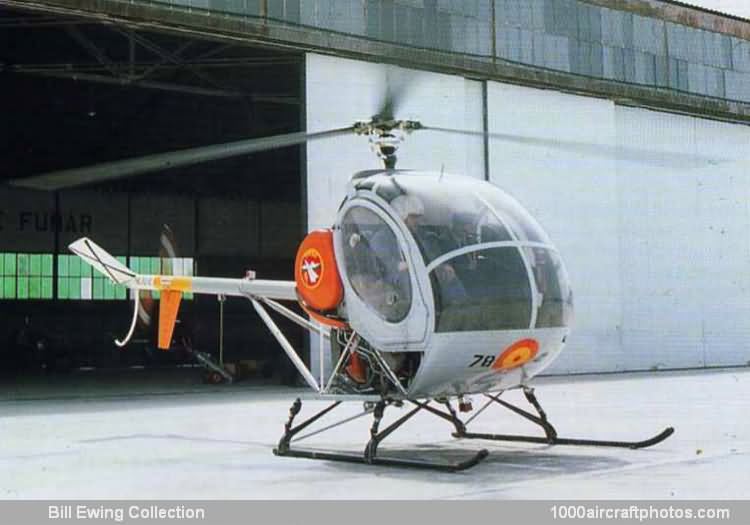02/28/2014. Remarks by Johan Visschedijk: "During 1955, the Hughes Aircraft Division interest in helicopters resulted in the purchase of rights to the McCulloch MC-4 light tandem-rotor machine. This did not go into production but Hughes used the simplified rotor design pioneered by the MC-4's designer, Dragoljub Kosta "Gish" Jovanovich, on a new light two-seat helicopter - the Model 269. As originally conceived, the 269 was built around a rectangular firewall bulkhead with a bubble canopy and cockpit tloor attached to the front, the 180 hp Lycoming fitted to the back, and a triangulated tubular strut tail unit carrying a small stabilizing rotor; a skid landing gear hung below the structure.
The 269 prototype flew on October 2, 1956, but the production 269A embodied numerous changes. In particular, the tail assembly was changed to a single tube boom with strut bracing, the cockpit was deeper and more streamlined and a small tail plane was added on the starboard side of the boom. Hughes quickly interested the US Army in the 269A and built a test batch of five YHO-2 observation helicopters which were well received by the military evaluators. However, it was four years before an Army production order was placed - and then it was for the TH-55A Osage dual-control version, which became the standard basic training helicopter with almost 800 examples being delivered.
In the meantime, the 269A was achieving success in the civil market with optional carbureted or fuel injected versions of the Lycoming HO-360 engine and with single or dual controls. It was succeeded by the 269B (marketed as the 'Model 300') which could seat three, and had a small increase in power. A number of 'Model 300s' were constructed by BredaNardi in Italy. On July 13, 1983, Hughes announced the transfer of the 269 series production to Schweizer, and production started in November 1983, two month before Hughes became a division of McDonnell Douglas on January 6, 1984, while Schweizer acquired the rights for the 269 series on November 21, 1986.
Under Hughes the 269 in its many variants had been exported widely to countries as far apart as New Zealand, Norway, Liberia, Hungary, Japan and Argentina. Steady sales were sustained under Schweizer - particularly for agricultural, military, and law enforcement operations. Several specialized variants were produced by Schweizer including the Sky Knight for police duties and the TH.300C dual control version sold to Turkey and other overseas military users.
The pictured aircraft (coded 78-41) was one of seventeen 269Cs ordered by the Spanish AF, and which were operated under the Spanish type designation HE.20, between 1978 and 2001. It is preserved at the Museo del Aire, Cuatro Vientos Airport, Madrid."
